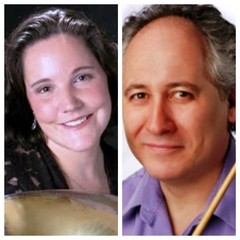|
Back
Benedition or Bunny-Rabbit? It Makes No Difference New York
Isaac Stern Auditorium, Carnegie Hall
01/26/2016 - & January 21, 22, 2016 (Philadelphia)
Josef Haydn: Symphony No. 103 in E-flat Major, “Drum Roll”
Anton Bruckner: Symphony No. 4 in E-flat Major, “Romantic”
The Philadelphia Orchestra, Yannick Nézet-Séguin (Conductor/Music Director)

Y. Nézet-Séguin (© Philadelphia Orchestra)
Expectations were that the Philadelphia Orchestra musicians would have left their snowbound metropolis on skis, ice-skates and sleds, with conductor Yannick Nézet-Séguin warmly wrapped on a sleigh pulled by seven miniature reindeer.
The reality was that these splendid visitors to Manhattan came in on the boring Jersey Turnpike, though boring was hardly the word to be used last night. True, both symphonies were in the same key of E-flat. True the first few seconds of the concert were too precipitous (conductor Nézet-Séguin leaped onto the stage and started the famous Haydn drum roll without waiting for the applause to stop) But the concert finished with a Bruckner movement whose usual majestic pondering substituted triumph for meditation. In between, Nézet-Séguin presented some very inspired playing.
The Haydn “Drum Roll” showed how rich the string section of the Philadelphia Orchestra could be, even when they seemed to be reduced (though not by very much). The sounds were lithe and light, the articulation clear. Those Haydn winds were so important that perhaps he could have moved them closer to the front. But that was hardly important since, in Carnegie Hall, conductors can depend upon balances being right.
After the unfortunately truncated drum roll, the first movement was given impetus, with hints of joviality but mainly a serious enthusiastic performance.
The second movement variations were a revelation. Haydn might have written this in Vienna, preparing for its premiere in London. One would like to imagine that the composer was in London, that he left his quarters and took (for his age) an energetic walk through St. James Park. And just as we imagine Beethoven striding through the countryside whistling the “Pastorale”, Mr.Nézet-Séguin’s spacious conducting allowed us to picture Haydn humming this folksong and allowing his perambulations to animate those variations. Not only this movement but the delicious finale were given a good Classical picture.
As for the Bruckner, allow me to give hosannahs and huzzahs to Philadelphia Orchestra annotator Luke Howard to present an Honest Epiphany. Perhaps not his own, but I had never realized that “Romantic” didn’t refer to a mid-19th Century appellation, but to a Gothic reference, Bruckner’s four-movement picture of a 14th Century hunting party. That comes from a possibly authentic quote from the composer, dealing with the gates of a castle opening and the party of hunters coming out to get their prey.
Yes, the third movement was obviously a series of hunting calls. Yet one should not be too quick to imply that this was commissioned by an 1874 equivalent of the National Rifle Association. And the meaning of the last movement was more like reaching the Eternal Grace of God than the downing of a bunny-rabbit after an hour of trekking.
Still, when played well, one can dismiss all imagery (and forget about those endless revisions which are insignificant and unimportant). The reason for the popularity of the Fourth is that it doesn’t hide its meaning, that its great chorales, its amazing crescendos, its refrains and strange dissonances are so effective under the right conductor with the right orchestra.
The Philadelphia Orchestra as a whole did it well. I can remember no brighter brass than those of the Finale here. The long string sections in the Andante and the endless bowing in the long coda of the Finale are both noble and poignant.
Not, one must note, played with the solemnity of earlier conductors, but with the gusto, the elevation of music that wants to tell its tale.

J. Montone/D. Liuzzi (© Philadelphia Orchestra)
And yes, the soloists had their moments. Both symphonies began with solos, and both timpanist and horn-player Don Luizzi and Jennifer Montone were splendid. But that was only their beginnings. Horns (the whole section) played without cracking a note (Bruckner, who believed in miracles, would have appreciated that); Mr. Liuzzi and his corps pounded with all the right thunder.
And now we come to Mr. Nézet-Séguin. His tempos were not breathtakingly long (the piece ran about 67 minutes), but the tempos were strong, forward looking and certainly grand. The first movement moved ahead with a paucity of rubatos. And while the second movement was played at an Adagio pace (Bruckner called for Andante), it never dragged, never lingered. Only a Philistine would worry about the repetitions in the bookend movements, the musical non sequiturs. With an ending like this, even those True Believing Atheists would have felt that tinge of the spiritual, simultaneously victory of both composer and conductor.
Equally important, it makes us anticipate next year’s Bruckner Festival at Carnegie Hall with unalloyed joy.
Harry Rolnick
|